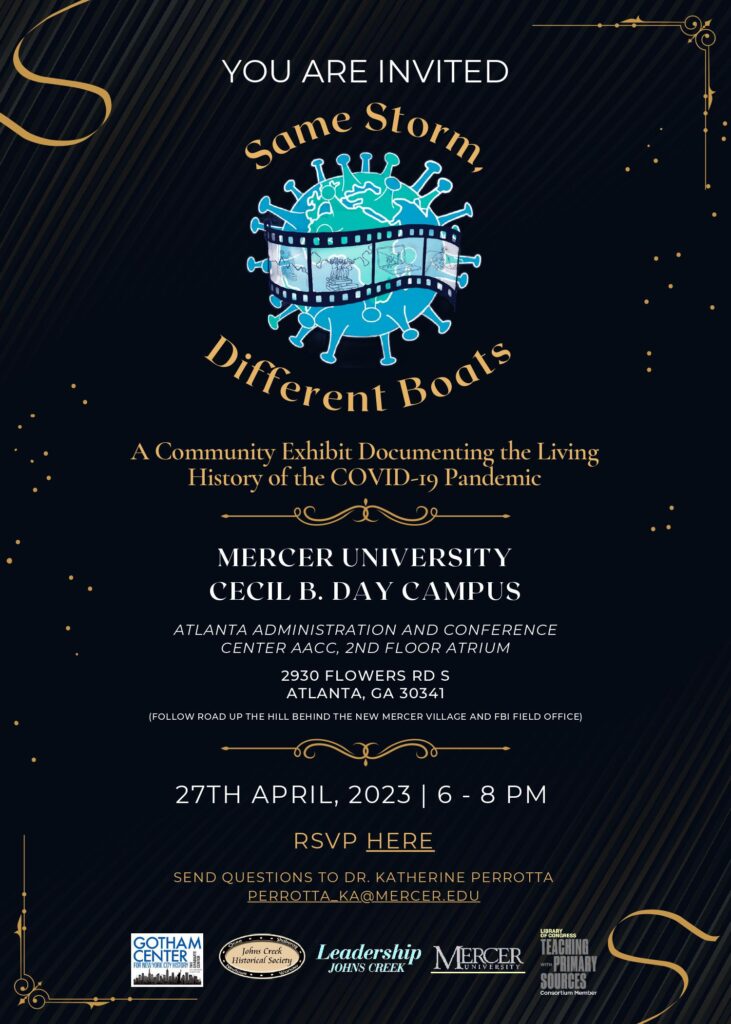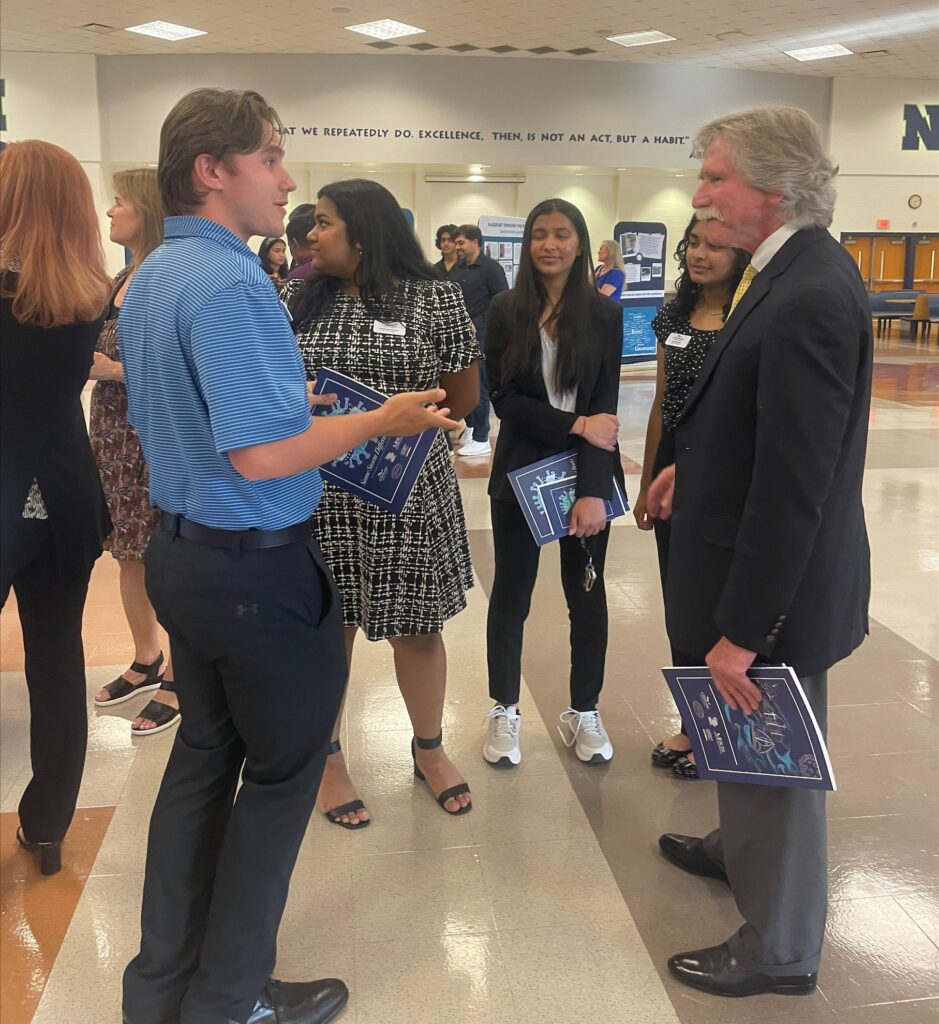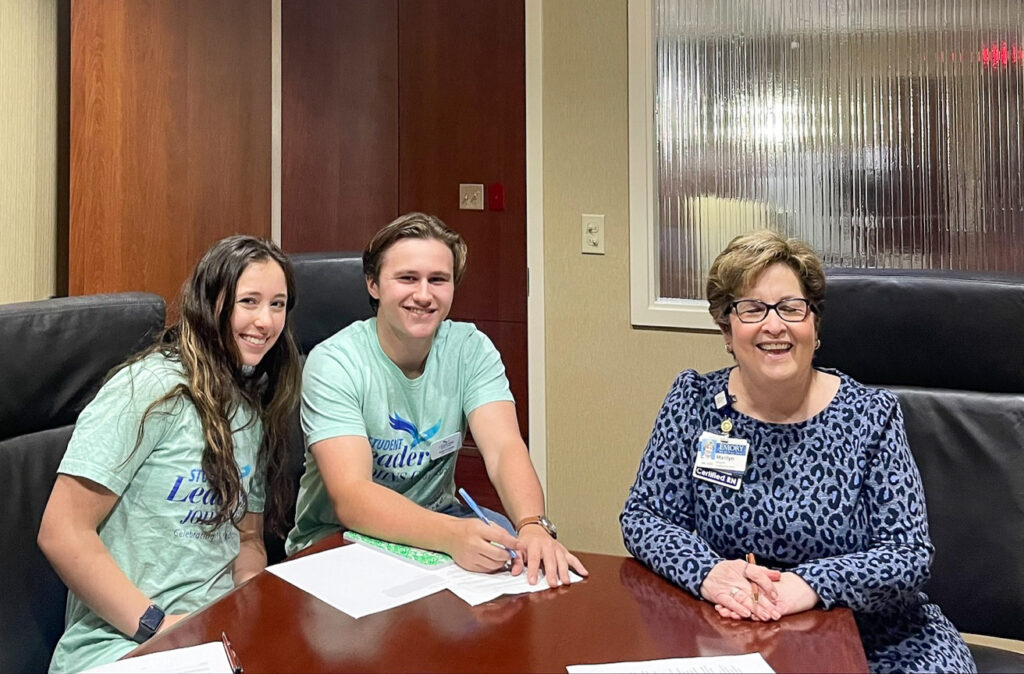
A grant project led by a Mercer University faculty member has created a public record of a community’s shared and unique experiences during the COVID-19 pandemic.
Dr. Katherine Perrotta, assistant professor of middle grades and secondary education in the Tift College of Education, worked with 30 high school students in Johns Creek to create an exhibit titled “Same Storm, Different Boats: Documenting the Living History of the COVID-19 Pandemic.”

They showcased their research during a public program at Northview High School in Johns Creek on April 19 and will host a second event at 6 p.m. April 27 at the Atlanta Administration and Conference Center on Mercer’s Atlanta Campus. RSVPs for the event are encouraged.
A $2,500 Georgia Humanities grant project last year forged the partnership between the College of Education, Johns Creek Historical Society and Student Leadership Johns Creek. Under the direction of Dr. Perrotta and Student Leadership Johns Creek Executive Director Irene Sanders, students in the leadership program created four short documentaries about the Macedonia African Methodist Church Cemetery.
Student Leadership Johns Creek is a competitive program open to students in the area’s five high schools, and participants tackle a community project each year, Sanders said.
“The kids really learned a lot from the Macedonia documentaries, so we wanted to continue going,” she said.
Dr. Perrotta and Sanders decided on a new project themed around the living history of the COVID-19 pandemic in Johns Creek for the 2022-23 academic year.
“Everybody has had so many different experiences … same storm, different boats,” said Dr. Perrotta, referencing the meaning behind the project’s name. “Hopefully, this project can promote a little bit of empathy for the fact that we all had to be resilient in getting through this difficult situation. By documenting this, we can show future generations how to weather the uncertainty of life.”
Dr. Perrotta secured a $25,000 Library of Congress Teaching with Primary Sources grant with the Eastern Region at Waynesburg University and a Mercer Provost’s Office Humanities Seed Grant, and the research began in August. It was a massive project, and the Johns Creek students did the majority of their work outside of regular school hours, Dr. Perrotta said.
Assisted by Julie Maurer with the City University of New York Gotham Center, the students combed through Library of Congress archives and wrote historical analysis essays. They reflected on their own pandemic experiences and conducted local research, which included going through Johns Creek Historical Society materials.
Curriculum and instruction Ph.D. student Katlynn Cross, the graduate research assistant for the project, helped students navigate the research processes. Divided into four groups, they looked at photos and art related to the pandemic; written formats such as newspapers, signs, text messages and social media posts; audio and visual elements such as the mayor’s COVID updates and events like drive-by birthday parties and virtual proms; and oral interviews with community members and stakeholders.


Among the interviewees were city, school and community leaders; health care workers; Georgia Supreme Court justices; Superior Court judges; U.S. Rep. Lucy McBath, from Georgia; and Gov. Brian Kemp. Through personal stories, students heard about the darker side of the pandemic as well as the silver linings that came about as a result, Sanders said.
The students designed the entire exhibit and curated their own artifacts, which include their original artwork and poetry; a painting by a Johns Creek artist; and photos of empty store shelves, social distancing in class and people wearing masks, Dr. Perrotta said. They also created a companion book and designed its logo and cover.
Shruthi Balachander, a senior at Northview High School, was part of the oral history group and served as the graphic designer for the project. She said being involved in the project was a rewarding experience that opened up a “multidimensional perspective” for her and the other students.
“It was essential to us that we capture the overall feeling of what (the pandemic) means to the community of Johns Creek. We wanted it to be something that people will engage in,” she said. “It shows that we survived this pandemic together. We were able to come out of the pandemic stronger. If it was done in a different area and country, it would be a different narrative. I really hope that (the public) looks at it and understands that they were not alone and that we are grateful and we are privileged to be in a community.”
Through their research, students got a global view of the pandemic and a better understanding of source materials and the role that young people can play in documenting history, Dr. Perrotta said. The COVID-19 pandemic has been documented through people’s phones, creating a living history record that wasn’t possible during outbreaks of the past like the Spanish flu pandemic in 1918.
“Primary sources are things we do every day that memorialize a particular time in history,” Dr. Perrotta said. “Eventually this is going to end up in the history books and social studies curriculum, and we all lived through it. Particularly for young people, very rarely are they asked about their experiences about virtual school and how the pandemic affected their lives. For me, it felt really important to demonstrate to kids that you can be part of documenting this history, so other people in the future can learn from it.”
Since the “Same Storm, Different Boats” exhibit is portable, its contents and companion book will later be cataloged and housed at the Fulton County Library System’s Ocee Branch, so anyone can check it out for educational purposes.
“I think it’s going to be an interesting takeaway for everybody,” Sanders said. “Our hope is that once it’s at Ocee, the different schools can check out parts of it. That’s the point, for everyone to be able to take a look at it. We didn’t want this to be something that we keep in our dining room. We wanted it to be something that the community could look at for years to come and learn from it.”











